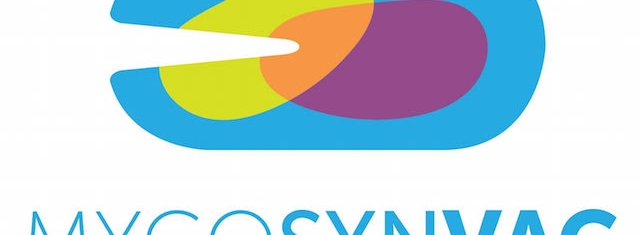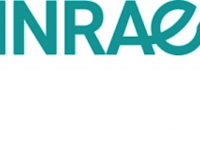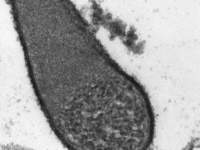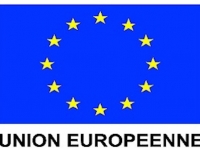Technology
THE EUROPEAN MYCOSYNVAC PROJECT DELIVERS ITS RESULTS BUILDING UP VACCINES
A MULTI-PURPOSE FUNDED BY EU BY 2020

MycoSynVac Logo (Source: MycoSynVac)
USPA NEWS -
The MycoSynVac project, funded under the European Union's Horizon 2020 research and innovation program, aimed to help solve the problem of antibiotic resistance in livestock by designing vaccines using the biology of synthesis. After 5 years of joint work on a multi-faceted project, including in particular the design and use of new bio-engineering and modeling tools and methods, the 8 project partners including INRAE, from 7 European countries have virtually united at the end of March 2020 to close the project. The opportunity to take stock of the project's successes, results already partially presented to the general public in the form of meetings and an educational game.
THE PROJECT WAS STARTED IN 2015 & COORDINATED BY THE GENOMIC REGULATION CENTER IN BARCELONA WITH 3 OBJECTIVES
Initiated in 2015, the project, coordinated by the Genomic Regulation Center in Barcelona, “‹“‹relied on advanced biotechnology to achieve three major objectives:-------------------------------------------------------------------------------------------------------------
Transform a bacterium (Mycoplasma pneumoniae) into a vaccine frame, that is to say a vector allowing to produce antigens, to deliver them in an animal in order to induce a specific immune response of interest,
Apply this vaccine frame against bacterial diseases affecting farm animals,-------------------------------------------------------------
thus contribute to the reduction of antibiotics administered to these animals.------------------------------------------------------------
The INRAE “‹“‹scientists who are partners in the project brought their skills in genomic engineering derived from the contributions of synthetic biology. The bacterium initially chosen as a chassis, Mycoplasma pneumoniae, is particularly well known thanks to the application of high throughput methods (omics approaches). However, in 2015, the methods to modify its genome were insufficient for the conduct of the project. It was therefore necessary to innovate using a whole range of genetic techniques from synthetic biology such as the cloning of whole genomes in yeast and the CRISPR-Cas9 technique to successfully produce the desired modifications. The objective of these modifications was, on the one hand, to make M. pneumoniae non-pathogenic by depriving it of its virulence genes and, on the other hand, to implant in the genome of this bacterium the genes coding for the protective antigens identified to construct the vaccines. considered.
THE MAIN RESULTS FROM MYCOSYNVAC
The main results from MycoSynVac. Each project partner contributed with innovative tools, methods and approaches to the overall success of the project. We can cite in particular:
The design of a new set of genetic tools to incorporate on / off switches in bacteria of the genus Mycoplasma for better and safer vaccines, showing good results in the laboratory and currently being analyzed in vivo.
The development of metabolic and kinetic models at the genome scale of the mycoplasma and the design of open access software (DMPy). The computer simulations revealed significant bottlenecks and led to crucial improvements allowing the cultivation of the microorganism in industrial fermenters, for the large-scale production of vaccines.
The development of new methods resulting from synthetic biology and making it possible to design non-pathogenic mycoplasmas and to integrate whole "genetic circuits" in the organism; these methods are potentially transferable to other mycoplasmas and other bacteria that are difficult to genetically modify.
The identification of surface proteins of several strains of mycoplasma (to which the immune system reacts) and their use for future pilot vaccines.
The development of a new genome engineering called MydelOrbit which allows rapid introduction and deletion into any genome of interest, which can be considered for future use also in human genetic therapy.
A better understanding of mycoplasmas and the development of new technologies and results under study for their potential in the development of new vaccines.
The presentation of the project to the public across Europe, as well as the production of a short documentary film on Youtube and the development of a free educational and mobile game called "Battle for Cattle", as well as the provision of material pedagogic. The type of approach developed here continues to be developed by the INRAE “‹“‹team and other international partners to imagine new generations of safer and more effective vaccines against diseases in farm animals. To find out more: www.mycosynvac.eu/ Project partners: Center for Genomic Regulation (Spain), MSD Animal Health (Netherlands), University of Wageningen (Netherlands), Imperial College London (United Kingdom), ATG: biosynthetics (Germany), University of Copenhagen (Denmark), Biofaction (Austria) and INRAE “‹“‹(France). Source : INRAe, UE
Mycosynvac Inrae Vaccine European Union Covid19 Research Genomic Genetic Barcelone Jedi Foster Rahma Sophia Rachdi
Liability for this article lies with the author, who also holds the copyright. Editorial content from USPA may be quoted on other websites as long as the quote comprises no more than 5% of the entire text, is marked as such and the source is named (via hyperlink).








